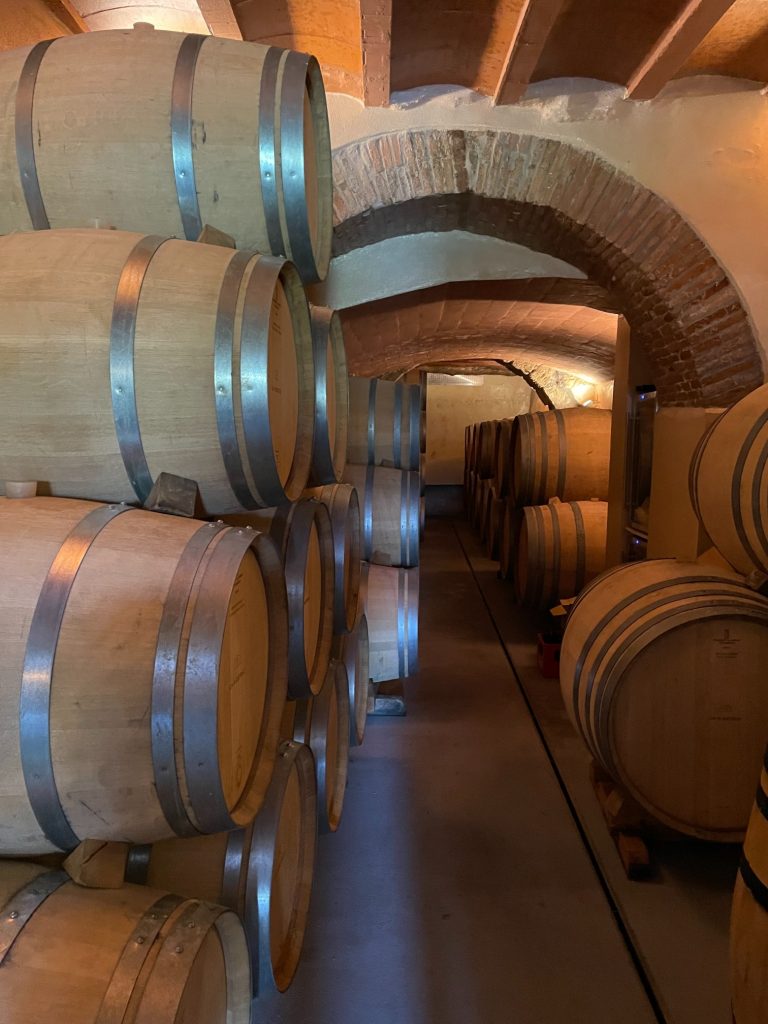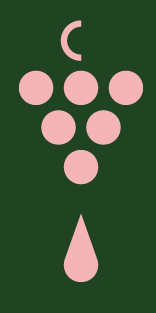Rueda, Rioja, Campo de Borja and Catalunya
June 2022
So the kids have complained for a number of years that all we ever did was go on holiday to France (easy to drive to, and I love France). One year when we were down in the south of France staying near Carcassonne, the conversation came up again – “Why couldn’t we go to another country?”. So, Rob and I hatched a plan and, feeling particularly proud of ourselves, the next day, we drove the kids down to Le Perthus and across the border into Spain – then, at the first services, we turned around and drove back to France – problem solved the kids have now been to Spain as well (apparently, we aren’t funny!)
When I was offered the chance to go to Spain on a wine trip, I jumped at the opportunity, in particular, to visit Northern Spain to help me understand more about the areas for some of the lovely wines we sell and to visit some amazing wineries. We flew into Madrid, and the first thing we did was drive for 2 hours to Valladolid; I will be honest, a place I had never heard of before – but what a stunningly beautiful city. I would fully recommend going if you get the chance, and I will definitely be persuading Rob that that is a place we need to go to. Now, what do you need to do when you’re on a wine trip? ‘Tapas Crawl’! After a number of bars and trying lots and lots of different wines and tapas, I can safely say I was very much looking forward to the next 3 days of this trip.
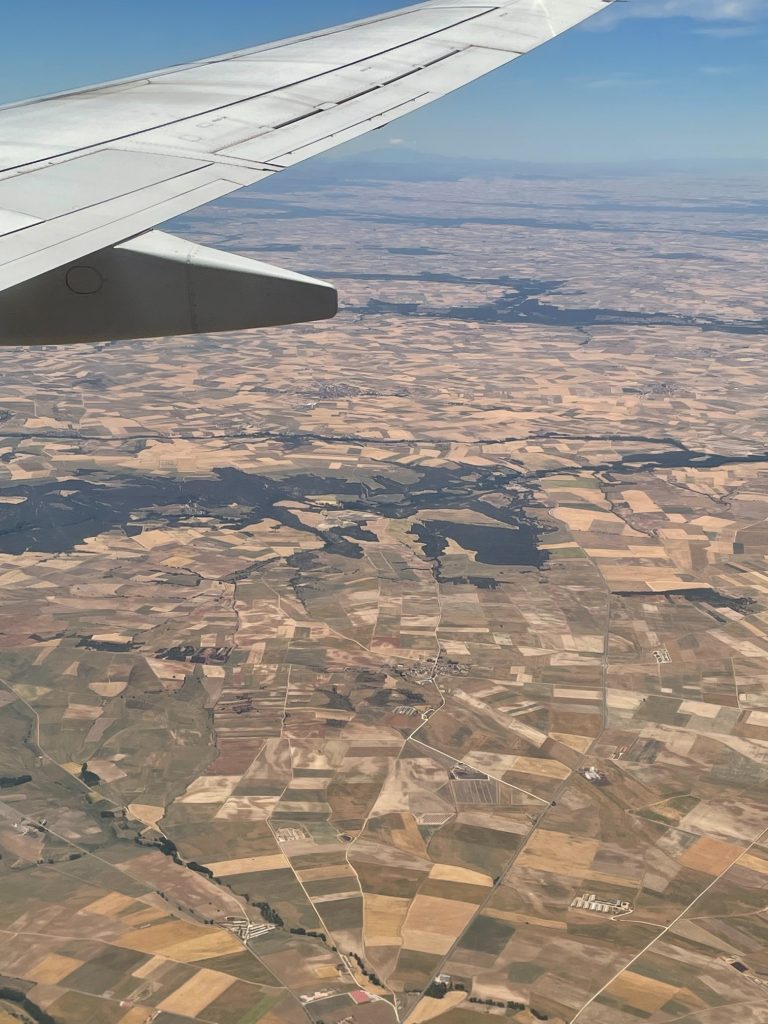
The next morning
We had a little 45-minute drive to our first winery ‘Diez Siglos’, formed in 2010; this is a collective of around 70 small to medium growers working together to continue winemaking traditions in Rueda. The vines we visited were on an old riverbed; the stones from the vineyard absorb the warmth from the sunshine in the daytime and then help to keep the vines warm in the cold evenings. Due to the high winds in that area, in particular around the time of flowering on the vines, and the hot days and lack of rain, they need to pick the grapes at night to get the best aroma and crispness from the fruit. Verdejo is the stand-out grape variety from this area. A couple of wines that stood out for me – Diez Siglos Rueda Verdejo 2021, 13% ABV, Vegan and 100% Verdejo. This wine is clean, crisp, and fresh. 3 to 4 months or lees before bottling, tropical flavours and lemon zest, and this is very easy to drink. My second recommendation is not one I expected to say but Diez Siglos Rueda Sauvignon Blanc 2021, 13% ABV, Vegan and 100% Sauvignon Blanc. They have to pick the Sauvignon Blanc before they pick the Verdejo from a single vineyard. An intense grassiness and tropical flavours, a Sauvignon Blanc from the area where Verdejo is at the heart – this is something you have to try for yourself.
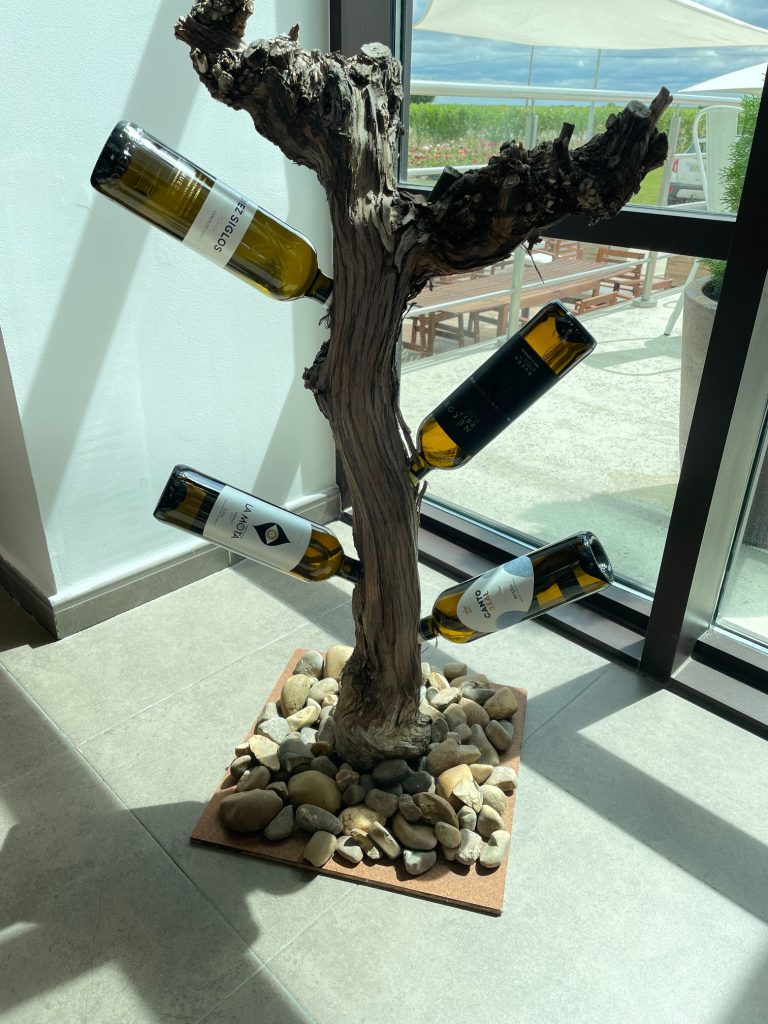
We had a bite to eat before leaving and heading to our next winery, Bodegas Menade, 1 kilometre west of the village of Rueda. This winery was established in 2005, the vineyard and family are steeped in history, and whilst they are committed to upholding the traditions of the past, they also are looking to the future for inspiration. Run by three siblings, Richard the winemaker, Marco the viticulturalist and Alejandra, who looks after exporting and communications. All their wines are certified organic, and fermentation is done using only natural yeasts present on the grape’s skins. The winery incorporates a cellar hewn out of the solid rock of La Seca at the beginning of the 19th century. Whilst we visited the cellars, they gave us a light lunch, ok I like food, so no complaints; we then got to the winery and looked around before sitting down to a 3-course lunch (yes, more lunch!!) Luckily we tried the wines at the same time – I have never had 3 lunches before – the wine helped to counteract the food! But what about the wines? I have to start with Adorado de Menade (1967 Solera Verdejo Palomino Fino) NV, 15.5% ABV, 50% Verdejo and 50% Palomino Fino and only available in 150cl Magnums. The ‘mother’ solera dates to 1967, but the first new production was in 2018; this shows the family’s regional roots. The grapes are all hand-picked and pressed in historical vertical presses dating back to the 1900s. Taking place in the cellars we visited, a proportion of the wine (saca) is removed from the end of a series of butts and is replaced proportionately along the line. This allows the wine to be released each year identically. The naturally developing flor adds a ‘rancio’ aroma, earthy, mushroom, nutty flavour (mainly from its time in oak), with notes of dried fruit. Savoury, complex and after we put this on in a tasting, I can safely say you either love it or hate it – very unusual and if you want a talking point at a dinner party – this is one to go with. But if you want to go for something safer and not as out there, then go for their flagship wine Menade Organic Verdejo 2021, 13% ABV, Vegan and 100% Verdejo. Stone fruit, fennel, white peach and thyme, crisp acidity and minerality – beautiful to drink and really shows off what they want to achieve.
They need to pick the grapes at night to get the best aroma
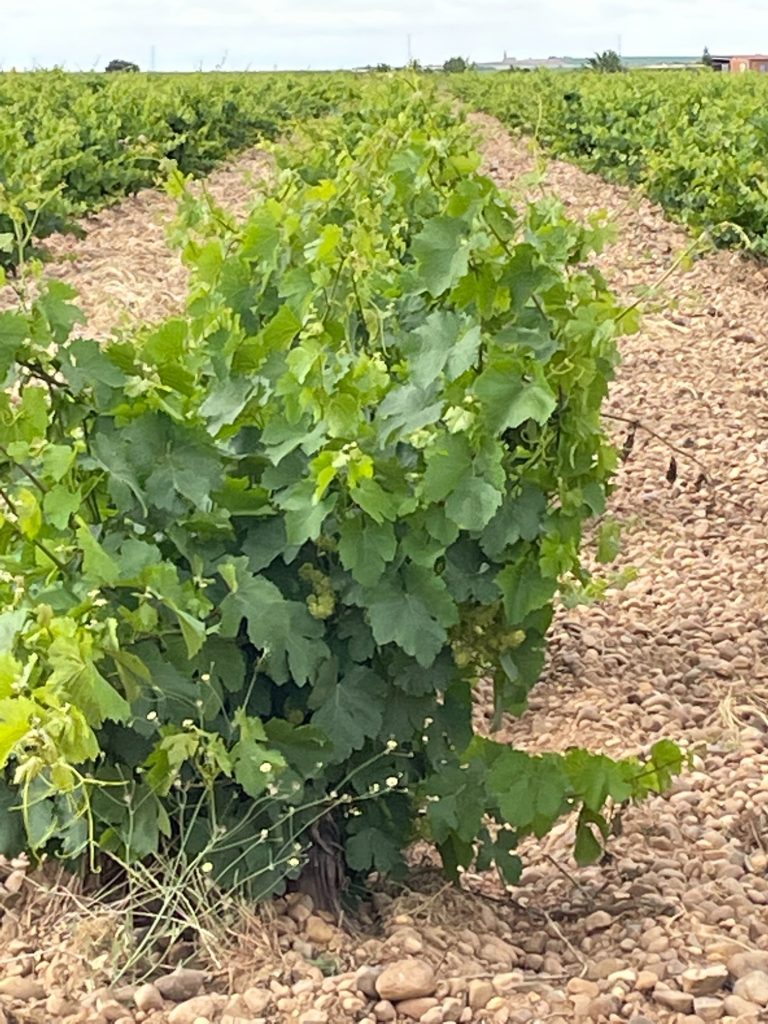
Yet more food!
To recover from all the food, we returned to the hotel for the evening in Haro, a beautiful town if you ever get the chance to visit the heart of Rioja Alta. Then went out for dinner with some of the lovely people from Gomez Cruzado – yep, more food!
After a very much-needed sleep the next morning, we went to visit the winery for Gomez Cruzado (5 min drive). The winery dates back to 1886. It was at that time that trade between Rioja and France passed along the Tudela-Bibao line, and the key Rioja wineries were located around the station of Haro.
Gomez Cruzado is one of 7 wineries in this area and is the 3rd oldest. It was sold back in the 1980s to a company that didn’t care much about its history or its principles of wine, but the winery was bought again by a family that wanted to bring back the beauty of the name and bring the quality back to Gomez Cruzado and wow have they achieved this. A real highlight of the trip for me. Gomez Cruzado Rioja Reserva 2014, 14.5% ABV, 85% Tempranillo, 10% Graciano & 5% Garnacha. Sourced from 30 yr old bush vines, hand harvested and 18 months in French oak before 2 years bottle ageing. Black cherry, brambles, black plum, cedar, spice and black pepper – loved this so much – brilliant wine. Then something a little different Linea Karman Rioja Clarete 2021, 13% ABV, Vegan and 70% Viura and 30% Garnacha. This rose is beautiful, with red currents and strawberries; this pale rose is beautiful throughout the whole year, soft fruit and a slight acidity. Well worth visiting this winery if you get a chance.
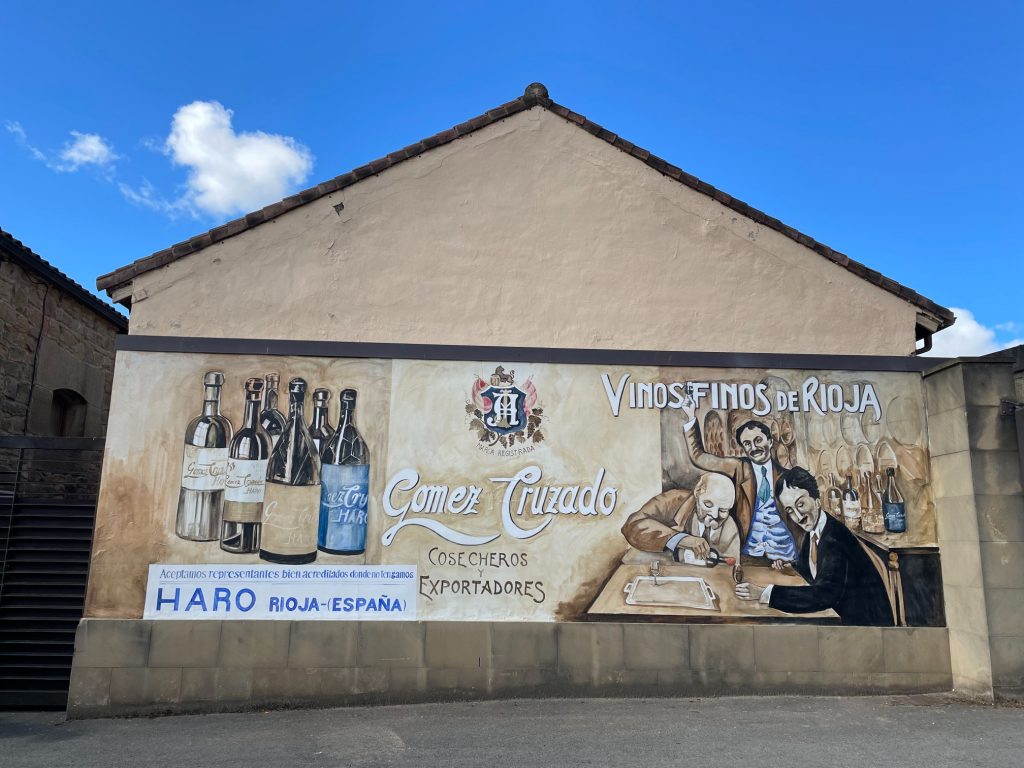
More food!
We then had a lovely lunch provided by Gomez Cruzado before setting off to our next winery, Bodegas Borsao, about 2 hours drive heading towards Zaragoza. The winery was established as a co-operative in 1959, and in 2001 it joined forces with 2 other co-operatives in the Campo de Borja region to become Bodegas Borsao. Grapes are sourced from over 375 member growers covering 2,400 hectares – nearly 1/3 of the region’s total. The climate in the area can be severe, with hot, dry days, cool dry winds (Cierzo wind) and cool nights. But this helps to maintain the acidity levels in the grapes. They have lots of different vineyards at different altitudes. This allows them to have easy-drinking, inexpensive wines as well as premium wines, the superior wine for me is their multi-award-winning Tres Picos 2019 (No, the label isn’t of the Yorkshire 3 peaks no matter what we tell you), 15.5% ABV, 100% Garnacha. From Borsao’s oldest vines (up to 60 yrs old), full-bodied, brambles, ripe strawberries, vanilla and liquorice spice. Elegant and velvety. We then had our second lunch of the day (food was a definite theme).
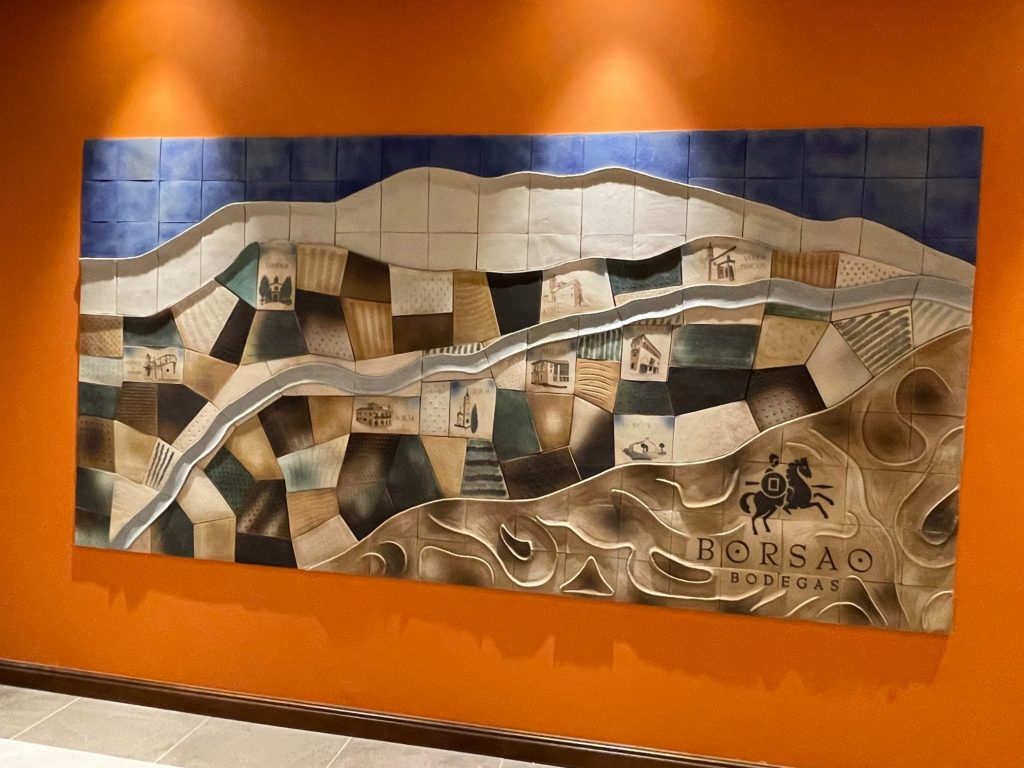
Mas Macia released its first cava back in 1936
After spending our last night of the trip in Zaragoza – and yes, more food and wine were had. We started our last day with a 3-hour drive to Fermi Bohigas (Mas Macia), Northwest of Barcelona and 10km from the foothills of Montserrat. The winery dates back 800 years and is still in the same family. In this area, Cava is king. Mas Macia released its first cava back in 1936, with the majority being sold to other Catalan producers, but in 2000 they invested in their cellars with an emphasis on high-quality estate-bottled wines. Bohigas Brut Reserva Cava NV, 12% ABV, 55% Xarel-lo, 30% Macabeu and 15% Parellada. Green apples, pears, and a lovely biscuit, creamy note. Nearly 20 months on lees gives you the balance you want from this lovely cava. Mas Macia Xarel-lo 2021, yep, a still wine, not sparkling! 12% ABV, Vegan and 100% Xarel-lo. Xarel-lo is one of the main grape varieties in Cava but makes a lovely still wine as well. Ripe apples, flint, ripe lemons, and peach with a gentle finish. Lovely summer wine.

We then had a beautiful lunch at Mas Macia before driving to our last winery. Ca N’Estruc. This estate dates back to 1548 and is nearer to the slopes of the holy mountain of Montserrat. The estate has a unique microclimate with vineyards planted to protect the vines from the cold north winds whilst optimising the sunshine to ensure the full ripening of the grapes. They are currently in the process of getting fully organically certified. They have some amazing wines, and this was a brilliant winery to finish with. The two wines I loved were Ca N’Estruc Idoia Blanc 2020, 13% ABV, 55% Xarel-lo, 17% Grenache Blanc, 15% Chardonnay and 13% Macabeu. The vines are between 20 to 50 yrs old, and the wines are matured for 5 months in Allier oak barrels. Pineapple, toffee apple, vanilla and toast and the flavours just keep going on to the finish. A lovely balance with a slight minerality to it, and my final wine of the trip was Ca N’Estruc l’Equilibrista 2016, 14% ABV, 55% Grenache, 30% Syrah and 15% Samso (Carinena). With 14 mths in new French barrels. Bright red cherries with blackberries with a hint of coffee and mocha. A lovely acidity and spice. Beautiful. And what better way to finish the trip but our 2nd lunch of the day (I didn’t need to eat for about a week after this trip).
The cellars at Ca N’Estruc
